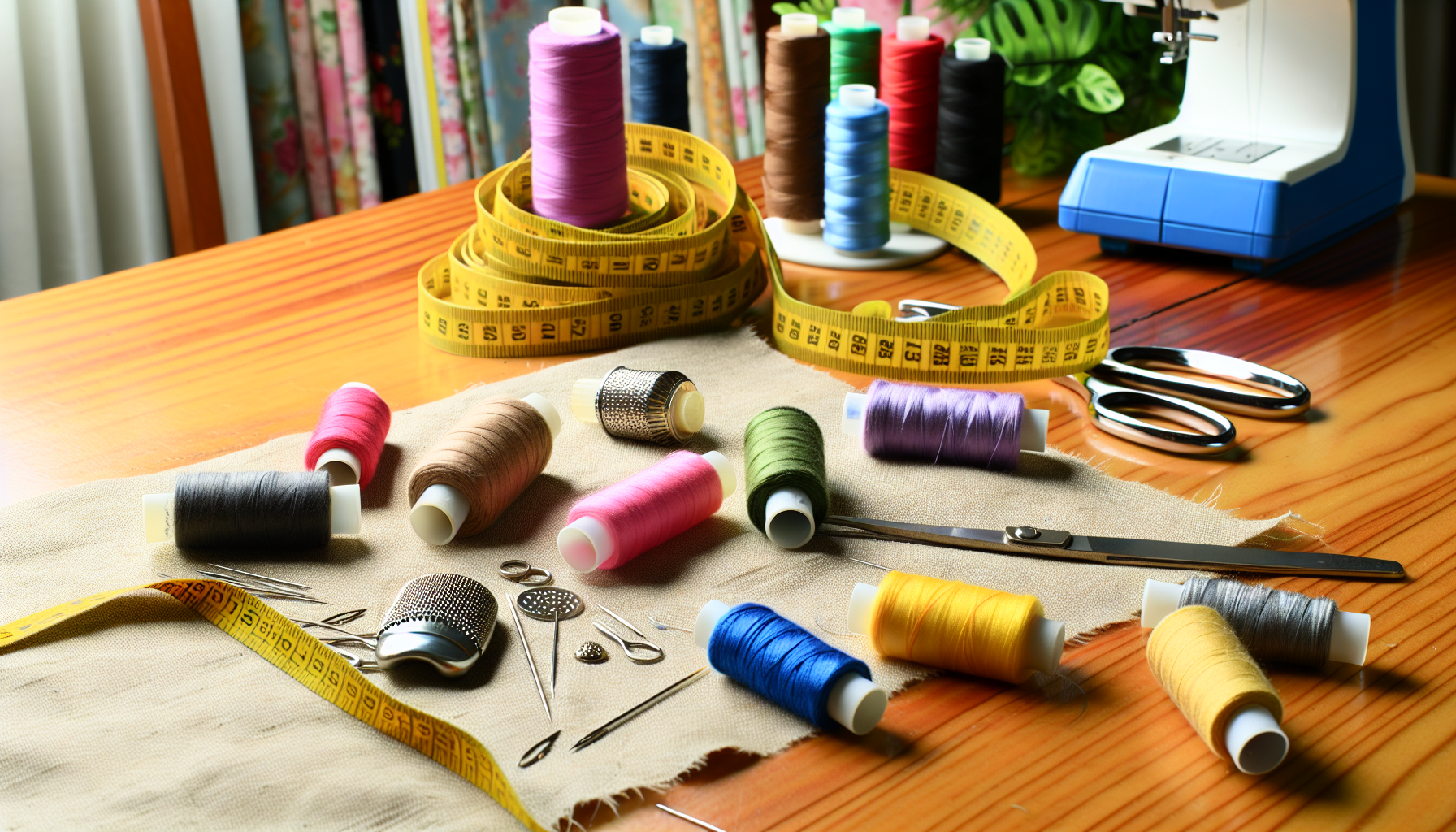
How to Start Sewing Work From Home
Sewing Work From Home: Your Guide to Starting a Home-Based Sewing Business
Are you passionate about sewing and thinking about starting a sewing business from the comfort of your home? With the rise of online marketplaces and the increasing demand for handmade, unique items, now is a great time to turn your hobby into a profitable venture. Whether you’re a seasoned seamstress or just starting out, this comprehensive guide will walk you through the essential steps to launch your sewing work from home business successfully.
Getting Started with Sewing Work From Home
Before diving into the world of sewing work from home, it’s crucial to assess your skills and resources. Ask yourself why you want to start a sewing business and what you hope to achieve. Are you looking to earn extra income, turn your passion into a full-time career, or simply share your creations with the world? Understanding your goals will guide your business decisions and set you on the right path.
Next, evaluate your sewing skills and equipment. Do you have the necessary sewing skills to create high-quality products? If not, consider taking sewing classes or tutorials to enhance your abilities. Assess your sewing machine and other tools to ensure they are in good working condition. Investing in quality equipment is essential for producing professional-looking items.
Setting Up Your Sewing Work From Home Space
Creating a dedicated workspace for your sewing business is vital for productivity and efficiency. Ideally, choose a well-lit area with ample space for your sewing machine, fabrics, and other supplies. Consider setting up a comfortable chair and a sturdy table to work on. Keep your workspace organized and clutter-free to streamline your sewing process.
Invest in storage solutions such as shelves, bins, or cabinets to keep your fabrics, threads, and notions neatly organized. A functional and visually appealing workspace will not only inspire creativity but also make it easier to focus on your sewing projects. Additionally, ensure your sewing area is well-ventilated and free from distractions to promote a conducive working environment.

Creating a Business Plan for Your Sewing Work From Home Business
A well-thought-out business plan is essential for guiding your sewing work from home business towards success. Your business plan should outline your goals, target market, pricing strategy, marketing plan, and financial projections. Conduct market research to identify your target audience and competitors, and tailor your products to meet the needs of your customers.
Determine the types of products you will offer, whether it’s custom clothing, home decor items, accessories, or alterations. Define your unique selling proposition (USP) to differentiate your sewing business from others in the market. Consider your pricing strategy, taking into account the cost of materials, labor, and overhead expenses, while remaining competitive in the market.
Sourcing Quality Fabrics and Materials
One of the key components of a successful sewing business is sourcing high-quality fabrics and materials for your projects. Whether you’re creating clothing, accessories, or home decor items, using premium materials will enhance the quality and durability of your products. Build relationships with reputable fabric suppliers or explore online fabric stores for a wide selection of textiles.
When selecting fabrics, consider factors such as material composition, texture, color, and print. Choose fabrics that align with your brand aesthetic and target market preferences. Keep an inventory of essential sewing supplies such as threads, needles, zippers, buttons, and trims to ensure you have everything you need to complete your projects seamlessly.
Marketing Your Sewing Work From Home Business
Effective marketing is crucial for promoting your sewing work from home business and attracting customers. Start by creating a professional brand identity that reflects your style and values. Develop a logo, business cards, and packaging materials that convey a cohesive and memorable brand image. Establish an online presence through a website or social media platforms to showcase your work and connect with potential clients.
Utilize social media marketing to reach a wider audience and engage with followers through regular posts, updates, and behind-the-scenes content. Collaborate with influencers or bloggers in the sewing and crafting niche to expand your reach and gain credibility. Consider offering promotions, discounts, or special deals to entice customers and generate interest in your products.
Managing Your Finances and Pricing Your Products
As a small business owner, managing your finances effectively is crucial for the sustainability of your sewing work from home business. Keep track of your expenses, income, and profits to monitor the financial health of your business. Separate your personal and business finances by opening a dedicated bank account and maintaining detailed records of your transactions.
When pricing your products, consider factors such as material costs, labor hours, overhead expenses, and desired profit margin. Calculate your pricing structure to ensure you cover all costs and generate a reasonable profit. Research the market rates for similar products to set competitive prices that reflect the value of your handmade items.
Providing Excellent Customer Service
Delivering exceptional customer service is key to building a loyal customer base and growing your sewing work from home business. Communicate promptly and courteously with your clients to address any inquiries, custom requests, or concerns they may have. Provide accurate information about your products, pricing, and shipping policies to set clear expectations for your customers.
Ensure timely fulfillment of orders and maintain transparency throughout the production process to build trust with your clients. Consider offering personalized services such as custom sizing, monogramming, or gift wrapping to add value to your products. Request feedback from customers to continuously improve your products and services based on their preferences and suggestions.
Scaling Your Sewing Work From Home Business
As your sewing business grows, you may consider scaling your operations to meet increased demand and expand your customer base. Explore opportunities to collaborate with retailers, boutiques, or online marketplaces to reach a broader audience and sell your products through multiple channels. Hire additional help or outsource certain tasks to streamline your production process and focus on business development.
Continuously innovate and diversify your product offerings to stay relevant in the market and attract new customers. Invest in marketing strategies such as search engine optimization (SEO), email marketing, or paid advertising to increase visibility and drive traffic to your online store. Set new goals and milestones for your business to keep yourself motivated and ensure long-term success.
Conclusion
Starting a sewing work from home business can be a fulfilling and rewarding venture for anyone with a passion for crafting and creativity. By following these essential steps and guidelines, you can set yourself up for success in the competitive world of handmade goods. Remember to stay true to your unique style, provide excellent customer service, and continuously seek opportunities for growth and innovation in your sewing business.
FAQs
-
How much money can I make from sewing work from home?
The income potential from sewing work from home can vary depending on factors such as your skills, market demand, pricing strategy, and marketing efforts. Some sewing entrepreneurs earn a part-time income, while others turn their hobby into a full-time business generating a substantial profit.
-
Do I need a business license to start a sewing business from home?
The requirements for a business license to operate a sewing business from home vary by location. It’s advisable to check with your local government or small business association to determine if you need a license or permit to legally conduct business from your home.
-
What are the best sewing machines for home-based sewing businesses?
The best sewing machine for your home-based sewing business will depend on your specific needs and budget. Popular options for sewing entrepreneurs include computerized machines, sergers, and embroidery machines from reputable brands such as Brother, Singer, Janome, and Juki.
-
How can I market my sewing work from home business effectively?
Effective marketing strategies for sewing work from home businesses include creating a professional brand identity, establishing an online presence, utilizing social media marketing, collaborating with influencers, and offering promotions or discounts to attract customers.
-
What are some tips for managing finances in a sewing work from home business?
To manage finances effectively in a sewing work from home business, it’s essential to track expenses, income, and profits, maintain separate personal and business finances, calculate pricing to cover costs and generate profit, and seek professional advice when necessary.












Post Comment
You must be logged in to post a comment.